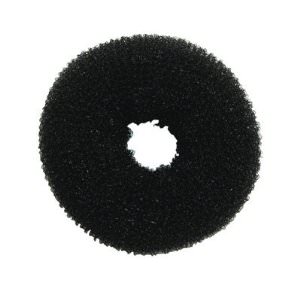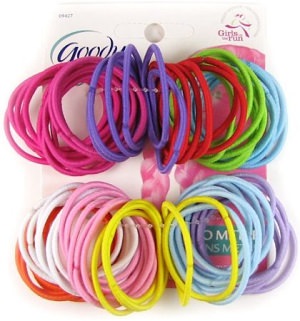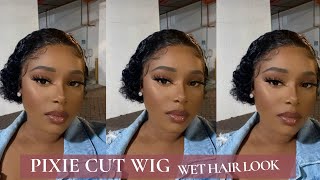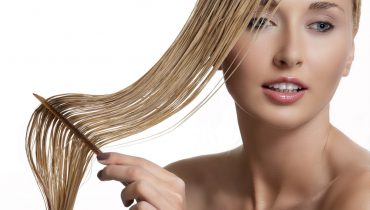How to Use Wet Bunning For Length Retention
 Last year my number one cause of breakage may have been the typical dry ends or relentless single strand knots.
Last year my number one cause of breakage may have been the typical dry ends or relentless single strand knots.
With an active 8 month old in the house this year, my main cause of breakage and hair damage are his ten little fingers yanking and pulling at my nape or any sort of ponytail or braid.
As a result, my hair has not seen the light of day especially around him and my bun is my bestie for life, or just until my son decides my hair is no longer his personal jungle gym.
Wet bunning is not a new thing for me, I practiced the style really early in my hair journey simply because it was easy and honestly I was getting the best retention at that time.
I still do it from time to time, it is great for the hot weather and Jonross (my son) is less interested in it; winning!
Wet bunning is essentially washing your hair, drying it with your t-shirt or micro fiber cloth, adding product, detangling and wrapping you hair into a bun while still damp.
The process is really very simple but if you are not careful during the detangling and bun making process you could end up losing instead of gaining length.
How To Wet Bun Your Hair
The first step to a great wet bunning routine is a good shampoo, because if you add product daily at some point the buildup will need the strong arm of some shampoo to unclog those pores and cleanse your hair.
Once your hair is clean, deep condition or just quick condition it depending on what your regimen calls for at the time. Conditioning will help with detangling and sets a great foundation for your hair in its newly moisturized state.
Depending on your hair type or if you are relaxed, pick the best detangling method for you. For example if you are 4a with very coily hair, detangling in the shower under the shower stream is probably the best option for you. If you are 3a with a loose curl pattern you might be able to get away with detangling with just leave in conditioner*, it all just depends on your head of hair.
Once your hair is detangled there are four types of wet buns that you can use for maximum retention.
 1. No ponytail Bantu Bun
1. No ponytail Bantu Bun
With this method you simply gather your hair in your hands and twist until it makes a bun or a huge bantu knot. Wrap the hair around itself and use some bobby pins to hold it in place. Smooth the top of your hair down using gel or a head tie and go!
2. Half Ponytail Bun
This is probably the easiest to achieve. While your hair is still wet just gather it in your hands and using an ouchless goody hair band, pull your hair through once and then a second time and on the third time, do not pull your hair all the way through.
Depending on how you like your bun to look, you can just rock it like that or you can spread the hair left hanging around the goody band to hide it but try not to disturb your half ponytail.
3. Sock Bun
If you want a more polished bun then using a sock or donut bun* maker to achieve the style might be just up your alley. Secure your hair in a goody band like you are creating a ponytail. Once you have your ponytail, pull the hair through the sock/donut tool and spread the hair over it to create a donut. Secure your hair with bobby pins* all around ensuring that the donut is completely covered and twist the hair left hanging out of sight under the donut.
4. Braided Bun
This is probably the best type of bun for natural hair women who want to keep their hair stretched while rocking a bun. It is also a pretty good option if you are relaxed as well. The method is easy, simply gather your hair into a pony tail and secure with a hair tie. Braid the tail portion and wrap it in a circle around your hair tie and secure the end of the ponytail with bobby pins* to ensure it stays in place.
Tips
1. Try to seal your hair very well before doing the bun, you want your hair to retain as much moisture as it can as you wear your bun day to day.
2. Soak your goody bands in some oil for at least an hour so that there is some slip between your hair and the band. This prevents possible snagging.
Additionally try to spare your edges from damage especially if you plan to do wet bunning in the long term by wearing the bun as loose as you can using gel as a method of keeping the crown area smooth instead of tension.
 3. Change the position of your bun periodically. Wear a top knot for a few days then switch to a side bun on other days. This gives your hair time to recover from consistent pulling in one area and prevents the breakage associated with tying your hair the same way every day.
3. Change the position of your bun periodically. Wear a top knot for a few days then switch to a side bun on other days. This gives your hair time to recover from consistent pulling in one area and prevents the breakage associated with tying your hair the same way every day.
4. Give your hair a break from the bun at night by taking it down and doing a braid until the following day when you are ready to wet bun again.
Alternatively, just loosen your hair tie and cover the perimeter of your head with a scarf before going to bed. This will keep your edges neat overnight and in the morning you can just retie your hair and you are ready to go!
5. Use the best products you have while you are doing this, you want your hair to really flourish so why not pick the stuff you know your hair likes.
Like with anything there are always a few con’s that go along with the pro’s to give us some balance. Though wet bunning is easy, your hair is at its curliest when wet so prepare to see an increase in single strand knots.
Single strand knots, affectionately known as fairy knots develop when a single strand creates a knot on itself. The only way to get rid of them is to trim your hair, by all means try to resist the urge to yank them out.
Another con is having your hair constantly wet especially if your hair is long or very thick. You may find that depending on the structure of your bun and the environment you are in, the middle of your hair never gets dry during the course of the day. Having wet hair all day gets old fast and the moisture increases the likelihood of getting a scalp infection which nobody needs!
For relaxed hair while stretching or transitioners, special care must be taken to avoid breakage especially when your hair is constantly wet. With your hair already higher porosity than natural hair, wet hair increases the chance of weakened strands via hygral fatigue which you may find may increase pressure on your line of demarcation.
Overall, wet bunning is a simple method for length retention with a few shortcomings here and there but as always do what is best for you and if you have never tried it, there is nothing wrong with giving it a whirl at least once!




![50 Modern Wet Hairstyles - [The Latest 2021 Trend]](https://static.hairurl.com/p/2021/12-18/ceb76cf52eef755e8e21808c5d15e0c0.jpg)